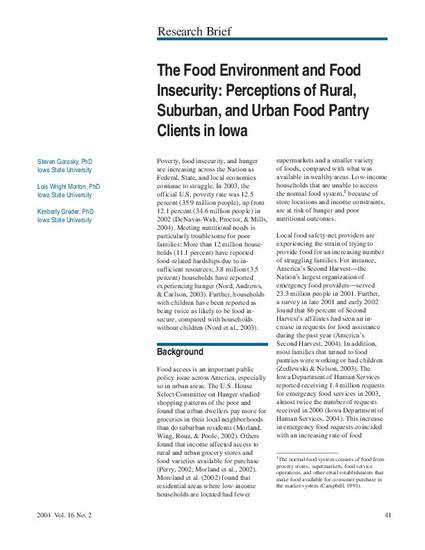
Poverty, food insecurity, and hunger are increasing across the Nation as Federal, State, and local economies continue to struggle. In 2003, the official U.S. poverty rate was 12.5 percent (35.9 million people), up from 12.1 percent (34.6 million people) in 2002 (DeNavas-Walt, Proctor, & Mills, 2004). Meeting nutritional needs is particularly troublesome for poor families: More than 12 million households (11.1 percent) have reported food-related hardships due to insufficient resources; 3.8 million (3.5 percent) households have reported experiencing hunger (Nord, Andrews, & Carlson, 2003). Further, households with children have been reported as being twice as likely to be food insecure, compared with households without children (Nord et al., 2003).
Available at: http://works.bepress.com/kimberly_greder/44/

This article is from Family Economics and Nutrition Review 16 (2004): 41–48.